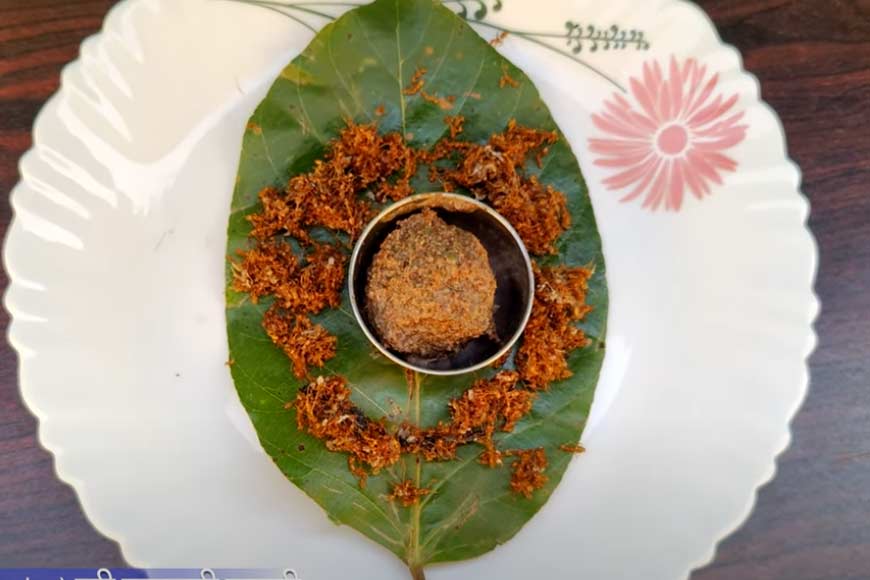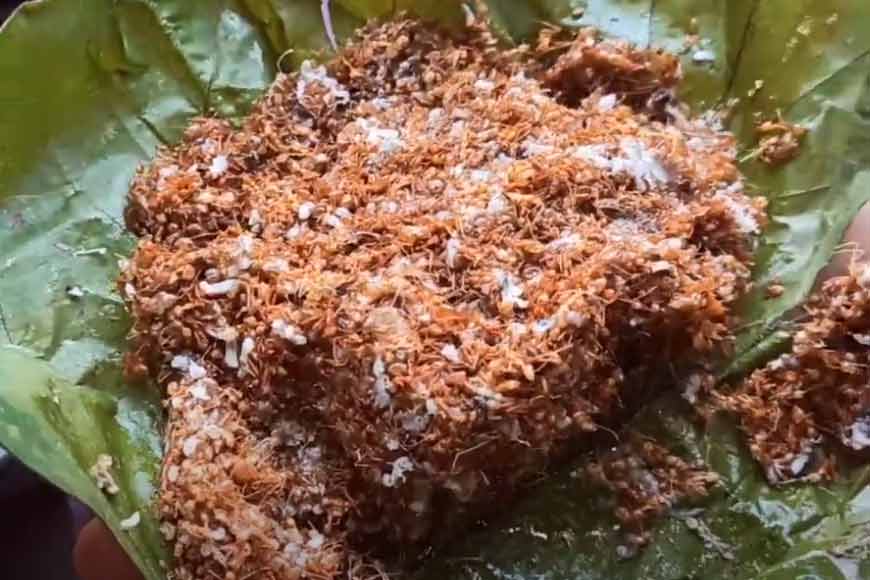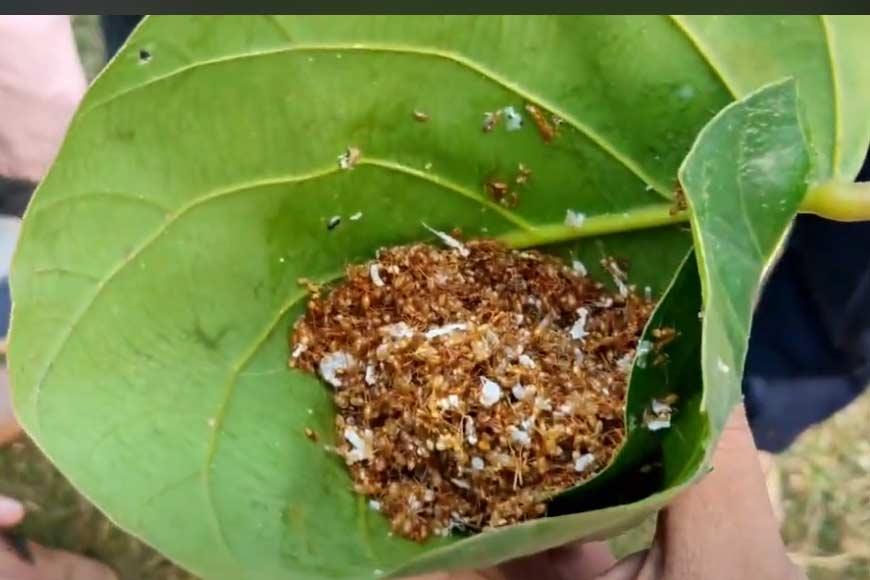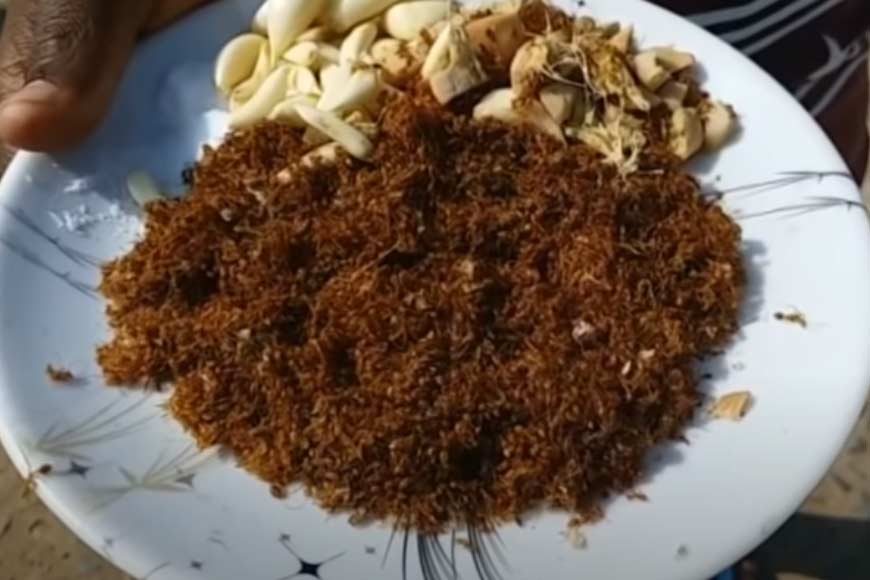Kurkut chutney - bridging the gap between the tribal and mainstream Bengal - GetBengal story

Kurkut Chutney, also known as Red Ant Chutney
For the immensely politicking and argumentative Bengalis, even food can at times turn into a political agenda and be used to create a political discourse. Who will not remember how more than two decades ago a news flash about the Jungal Mahal sent ripples and protests through the social and political fabric of Bengal? Death of a few Adivasi women who were said to be starving and were surviving only on Kurkut, a kind of red ant found in Jhargram and other tribal belts of Orissa and Chattisgarh. Ironically, that very Kurkut is today a delicacy and that too Orissa has recently received a GI tag for their Kurkut chutney. This very chutney that was in the centre of politics a few decades back is today considered a delicacy in Jhargram, with tourists flocking to homestays and asking for Kurkut chutney that is even selling at a high price!

Kurkut is a red weaver ant that people usually avoid in fear of its acidic prick that can create several bumps on the skin, let alone the allergic reactions it can cause in many. But several tribes in the eastern part of India use red weaver ants as a main ingredient to make ‘kai chutney’. The chutney is also referred to as “chapra” in the local dialect and is considered an elixir. Researchers have found several health benefits associated with its consumption. The recipes of Red Ant Chutney or Kurkut Chutney have been preserved by tribal communities. Recently, this delicacy was discovered by people from other sections of the society and many enthusiasts were enticed to research more about it. Food researchers claim that the kai chutney made of red ants is indeed a super-food. There is a typical method of ‘hunting’ or collecting the ants. Also, the method to prepare the chutney is passed down through generations.
As researcher Abinav Dasgupta who is researching on indigenous tribal food said: “In preparation of this chutney, the biggest arduous task is that of collection of the ants that live in hive-like structures. The ants have to be pulled out, females and their eggs are found deep inside while male ants guard the openings. The person collecting the ants is constantly stung by the male ants. Enduring extreme pain, the collector keeps on collecting these ants. The fiery and spicy flavour of the chutney comes from the acidic properties of the sting.”
The collected ants are thoroughly washed along with their egg and larva. They are placed in a mortar and pestle and other ingredients are added. These ingredients include garlic, ginger, green chilies, coriander and salt.. The mixture is then turned into a paste or even cooked at times. Commonly, the chutney is served with loaves of bread or chapatis. This Kai chutney is a great remedy for cough, flu, difficulty in breathing, cold, fatigue and several other ailments. The ants and their eggs contain formic acid, which is known to fight bacteria in the human digestive system. The chutney is known to contain optimum amounts of zinc, calcium and protein, which is considered to be very good for the overall immune system. The present GI tag will act as an opportunity for the tribal population to streamline, breed, and collect the ant and their eggs that can now be used commercially. “It will even create employment opportunities for tribals,” added Dasgupta.

On a visit to Belpahari of Jhargram, one gets to see the collection of kurkut. The sun-dried ants are kept in containers for selling at a pretty high price to tourists. They even sell them live, dried or in a readily consumable manner. Thanks to the high demand, they manage to sell large quantities at village markets and haats (fairs). The rate of kilogram of live kai pimpudi is around Rs 400-600 and that of the chutney is Rs 1,000. Bidhan Debnath of Belpahari Tourism Association said: “Many tourists have got to know of this chutney after it got the GI tag and are asking for it when they are in Jhargram. The savoury chutney is popular in the region for its healing properties also and has valuable proteins, calcium, zinc, vitamin B-12, iron, magnesium, potassium, sodium, copper, and amino acids. Tribals have been using it for generations to boost their immune system and fight diseases.” The tribal healers prepare a medicinal oil with Kurkut, and this concoction is used as a body oil for babies and to cure rheumatism, gout, ringworm and other diseases. “The tribal people also drink soup made with these ants. The red ant is the main source of protection to the health and safety measures of the local tribes,” said Deepak Mohanty, a senior scientist and head of Krishi Vigyan Kendra at Jashipur in Mayurbhanj district. “The food improves appetite, enhances eyesight naturally, helps in the development of a healthy brain and nervous system, battling depression, fatigue and memory loss.
In the Belpahari region and other parts of Jhargram, the Kurkut eggs and ants are being used to whip up different recipes. A food stall owner in this region, Harish Mahato said: “A lot of people coming from cities are asking for Kurkut. So we are not just making chutneys, but also Kurkut Jhaal and Jhol with bay leaves. 100 grams of chutney are being sold at Rs 100!” A popular homestay in the region is Ashwini Homestay supplies Kurkut Chutney in Saal leaves and earns a lot. During monsoon, these ants and eggs are sold at Rs 600-700 in local markets that are bought in loads and sold in the city markets for anything around Rs 1500 a kilo.

Red weaver ants usually make nests of leaves on trees, which are elliptical in shape and range in size from a single small leaf folded and bound onto itself to a large nest consisting of many leaves and measuring over half a metre in length. The Kai families consist of three categories of members — workers, major workers and queens. Workers and major workers are mostly orange-coloured. Workers are 5-6 millimetres long, major workers are 8-10 mm long with strong legs and large mandibles and queens are 20-25 mm long and greenish brown coloured. They feed on small insects and other invertebrates like beetles, flies and hymenopterans. They are also recognised as bio-control agents because they are aggressive and will prey on most arthropods entering their territory. They protect a variety of tropical crops against insect pests, acting as an alternative to chemical insecticides. So the next time you visit picturesque Jhargram, do not forget to taste the Kurkut chutney!











